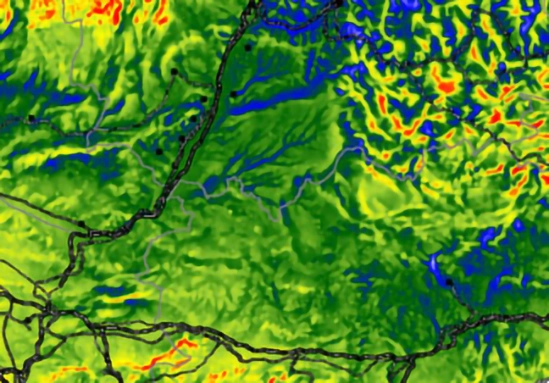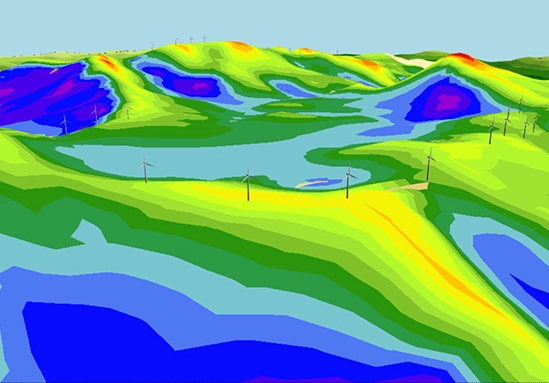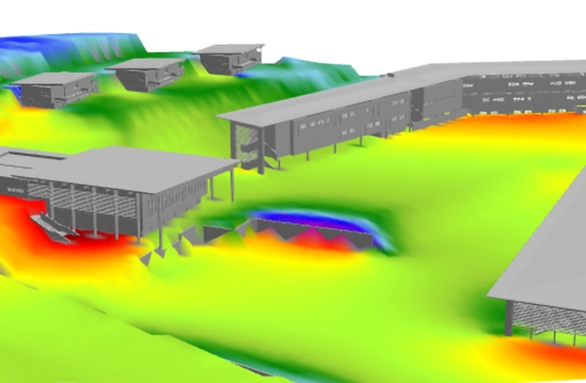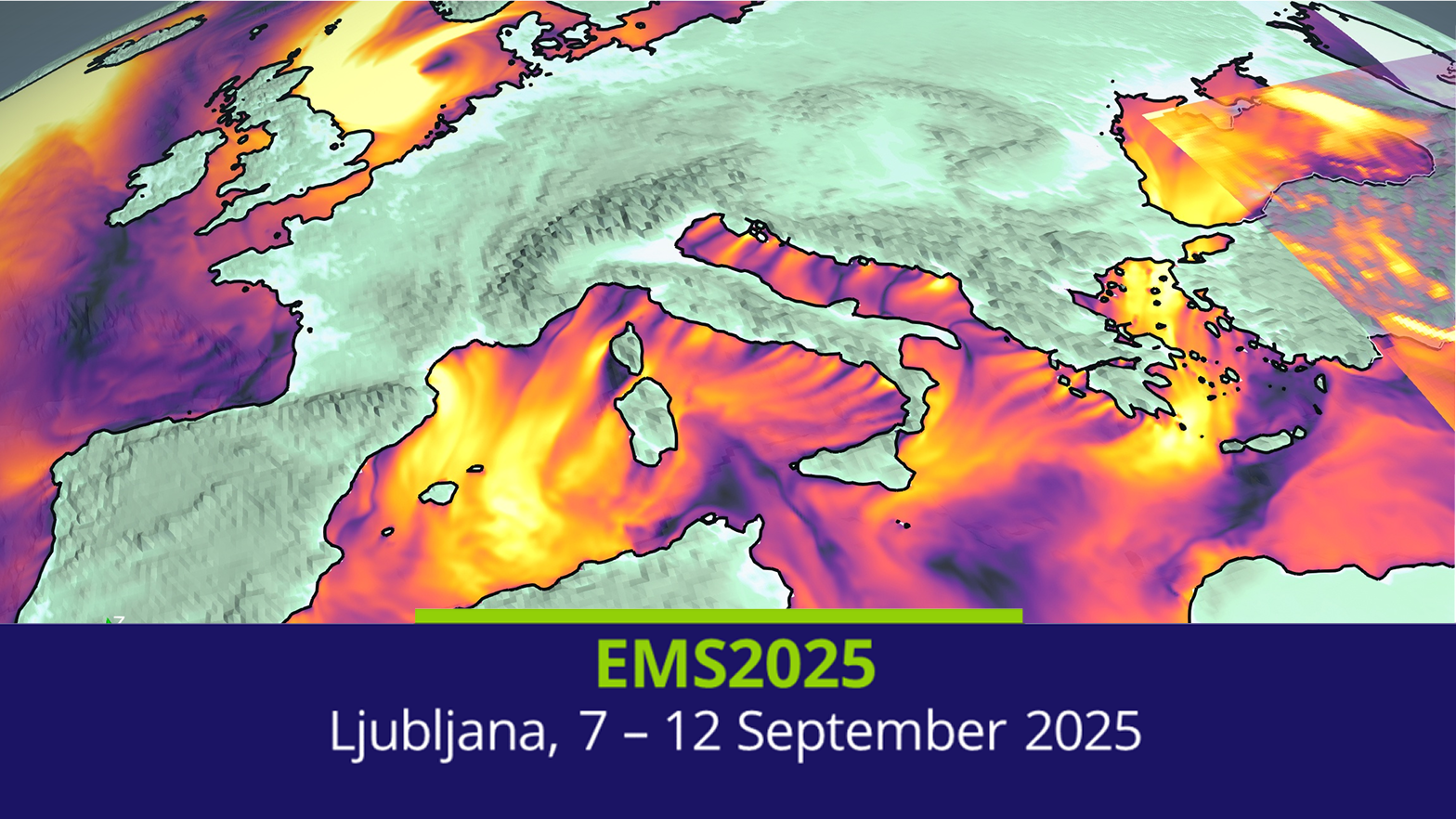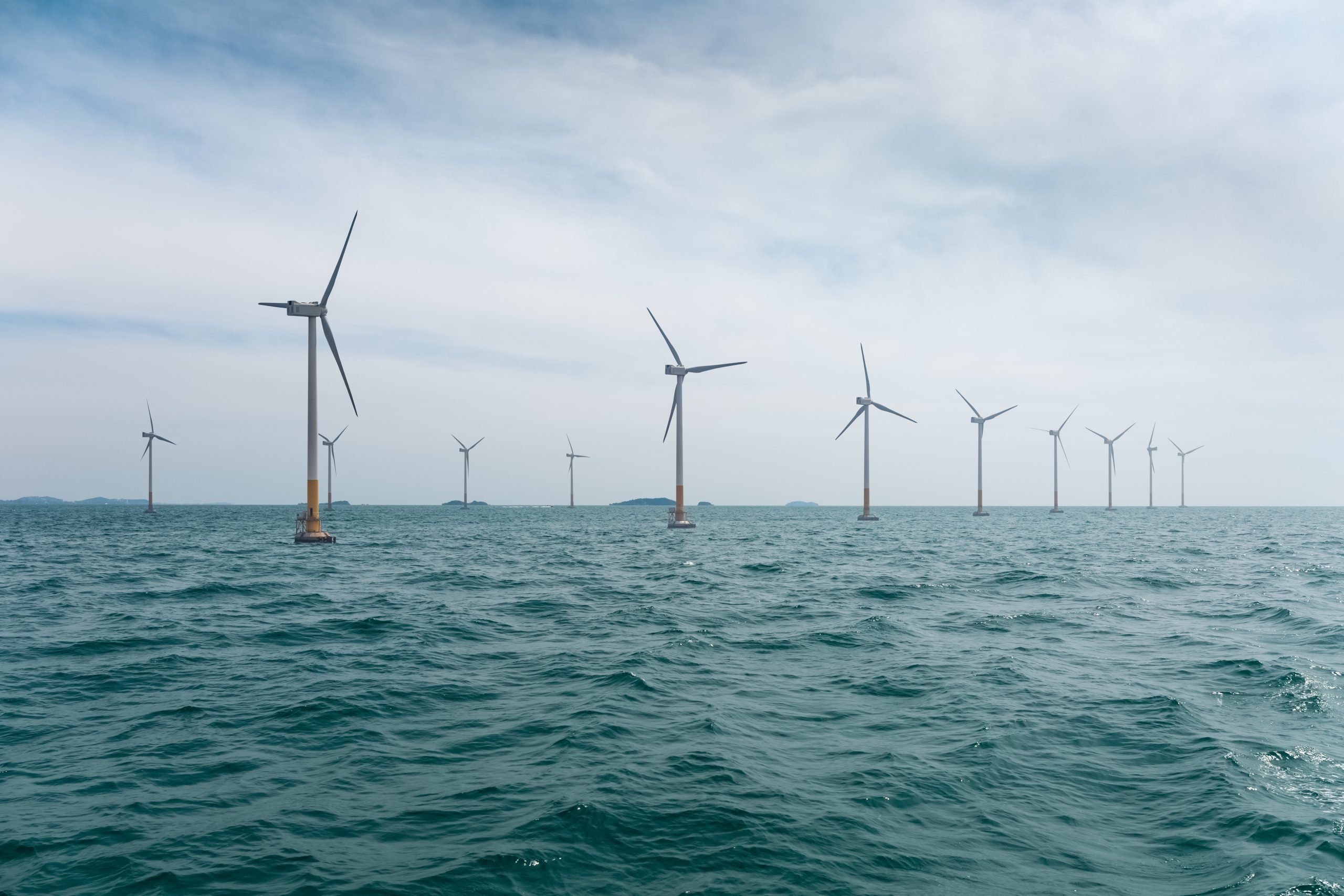Wind modeling
Our cutting-edge technologies, such as Computational Fluid Dynamics (CFD) and meso-micro-scale coupling, provide a sophisticated numerical approach to simulating wind behavior at multiple scales, enabling detailed analysis of complex airflows.
Accurate computation of wind characteristics
Our numerical approach allows us to model the complex behavior of the wind in detail, enabling us to accurately compute its characteristics. The local topography, with its elevations and contours, has a significant influence on air flows. Our numerical models fully incorporate this data and also account for the presence of obstacles such as vegetation, buildings, or complex structures.
News
Natural Ventilation: How to assess and optimize it in buildings using numerical tools?
How to assess the natural ventilation of buildings in urban areas and to optimize it using numerical tools like CFD software? From assessing natural ventilation and air exchange rate potential to optimizing the placement of openings, this webinar covers all aspects of...
EMS Meeting 2025: METEODYN presents an online talk
Don’t miss out on our participation in the European Meteorological Society Meeting From 7 to 12 September, Ljubljana, the Slovenian capital, will host the annual meeting of the European Meteorological Society. An event dedicated to the exchange of knowledge and ideas...
Webinar: New technologies for offshore wind power
As offshore wind energy grows, so does the need for accurate and reliable wind data. To help offshore project developers and decision-makers, Meteodyn has developed a comprehensive new offering combining scientific excellence and operational value. Watch our webinar...
